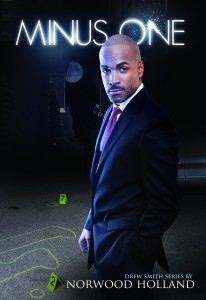The Law Clerk by Stan R. Gregory
March 31, 2012
Stan Gregory’s first novel The Law Clerk is the story of Ben, a hard working judicial clerk not long out of law school enjoying his job but struggling to make ends meet. Ben is like a grounded caterpillar trudging along until the transformation to fly. Just when it seems fate has provided the right romance comes along an opportunity to get out of all his burdensome debt. Unsatisfied in his grounded state he attempts to speed up the process to fly to financial freedom. That opportunity presents itself in the form of a moral choice between right and wrong. Ben must decide whether to take a bribe and steal privileged documents from the Evidence Room for a rogue felon with a history of stock manipulation.
The temptation is too great. He succumbs to the dilemma gambling his future and license for immediate financial security. Ben sells his soul hoping it’s done but knowing it’s not over. As usual in cases of bribery blackmail follows and Ben is pressured to steal more documents. So how does Ben make it all right and reclaim his integrity? He begins by using the money to hire a private eye to track down and disclose the source of his new misery.
The Law Clerk is chocked with suspenseful action. It’s well written with organic metaphors and subtle classical allusions and an adequate sprinkling of romance. It’s a real legal thriller. Too often a new novel is touted as a legal thriller only to discover the thrill is gone. As promised Gregory delivers gripping suspense. Writers are often advised to make the protagonist suffer with the challenge of overcoming that suffering. The theme of temptation and its consequences makes the reader uncomfortable siding with Ben’s conscience warning him not to do it, but he does and thus becomes a lawyer without principle. And that just won’t do for a hero. Butterflies are free, but not in your stomach. So how does he make it right and what is the lesson learned?
I won’t spoil the ending with too much detail, but I recommend The Law Clerk with five stars.
Self Publishing: Designing The Book Cover
March 19, 2012
 They say you can’t judge a book by its cover. All the more reason when marketing a book it should present the best possible first impression. The cover should summarily tell a potential reader what the book is all about both figuratively and literally. A picture is worth a thousand words, and your cover should charm and seduce a reader into wanting to spend time under its spell for some 90,000 plus words. Romance authors have relied on this art form with bare chested hunks with glistening abs and bulging pecs embracing the ripped bodice of a voluptuous female. Cheesy maybe, but sex sells, and though you may not be selling sex the idea is to entice a potential reader to pick up your book, thumb through it, and to read the back and front material. Intrigue them and make the book impossible to walk away from purchasing. This can be accomplished with an image coupled with blurbs.
They say you can’t judge a book by its cover. All the more reason when marketing a book it should present the best possible first impression. The cover should summarily tell a potential reader what the book is all about both figuratively and literally. A picture is worth a thousand words, and your cover should charm and seduce a reader into wanting to spend time under its spell for some 90,000 plus words. Romance authors have relied on this art form with bare chested hunks with glistening abs and bulging pecs embracing the ripped bodice of a voluptuous female. Cheesy maybe, but sex sells, and though you may not be selling sex the idea is to entice a potential reader to pick up your book, thumb through it, and to read the back and front material. Intrigue them and make the book impossible to walk away from purchasing. This can be accomplished with an image coupled with blurbs.
Novel covers are generally influenced by the overall tone of the book. In planning a cover decide whether to use a graphic or photographic representation. I write in the noir mystery thriller genre which relies on heavy realism therefore I decided to go with the photographic while a fantasy genre author would prefer an animated still image. The next step is finding a graphic artist and/or photographer who can translate your ideas into a captivating image. I found my graphic artist when I noticed a Facebook friend’s book cover. Immediately after a brief introduction we were in simpatico. I now rely on that artist for all covers and promotional art work. It’s important to find a graphic artist who’s work you admire and with whom you can connect.
It can’t be emphasized enough the importance of working with a professional. BookSlut blogger Jessa Crispin in her feature How to Judge A Book by its Cover tells what she looks for when browsing for a book to purchase and its all in the cover. Her subjective assessment tells what she seeks and avoids in evaluating a cover’s components including the artwork, the spine, descriptions, back and front panels, fonts, blurbs. the author photo and the ISBN block. A good exercise is to browse bookstore shelves to get ideas. Unless you’re an accomplished writer and artist I would not attempt to design my own cover, but if you have supreme confidence in your artistic ability then by all means go with it. Read the link to Anthony P. Palmieri’s Designing a Cover for your Book: A Guide for Self Publishers, in addition , the internet offers a number of how to articles and videos. See How To Design Book Covers.
If your book is a work of art then so should be your cover. It may be the rule you can’t judge a book by its cover, but it’s the exception that proves the rule: a great book cover is usually an indication of a great book. Both require time and careful attention.





